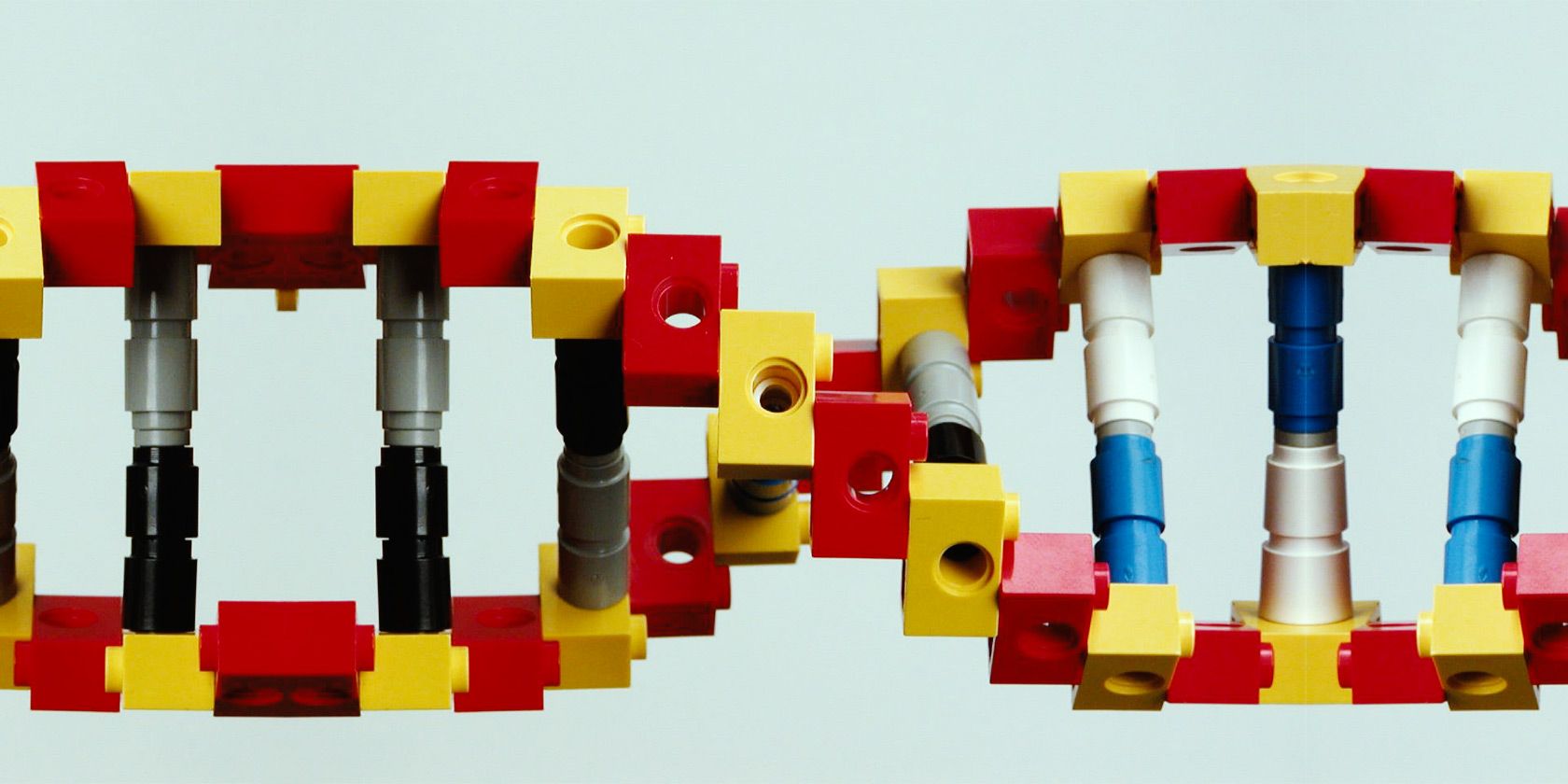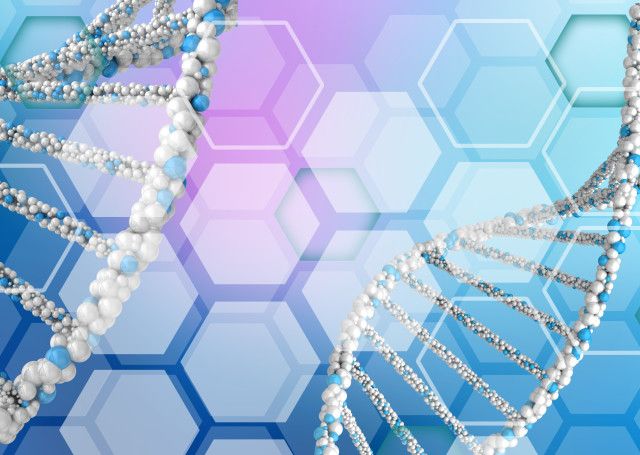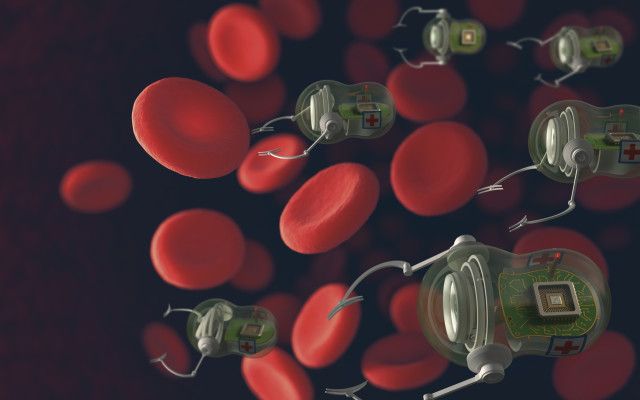Robots are cool. Robots that operate at a molecular level? Those are even cooler -- and there's no limit to what they could accomplish.
While science has been fascinated by the impossibly small building blocks of the world for hundreds of years, it's only been since the 1980s that scientific understanding and technological development has truly allowed nanoscience to be an active research field.
We're used to thinking about impressive robots as being incredibly large or incredibly complex, but new and exciting developments have left nanorobotics poised to completely redefine many areas of science and technology.
Just How Small Are We Talking, Exactly?
Nanorobotics deals with materials at the molecular level and smaller, meaning that the nanorobots are working with individual atoms, proteins, molecules, and cells.
One of the easiest ways to understand why nanoscience is so important is to think of all of those nanoscopic atoms as LEGO blocks.
Much like LEGO, atoms and molecules can be combined in innumerable ways to create anything in the natural world, and this capacity opens the door to influencing literally every aspect of our lives.
If the LEGO analogy isn't working, Big Hero 6's "MicroBots" are another pretty good way to conceptualize nanorobots - just remember that nanorobots are several million times smaller than the fictitious microbots!
What Do Nanorobots Do?
Nanotechnology has already allowed us to make stronger and more durable materials by manipulating molecular structures, and has been a driving force behind a lot of modern technology (including the plastic film that makes up your laptop or phone screen!).
Nanorobotic research has a different focus, and its applications are way more exciting.
Recent research breakthroughs have created nanorobots that are able to perform highly specialized functions at the nanoscopic level. Some nanorobots act as switches, others as pumps, and still others as motors that can propel that nanorobot across space and through liquid.
These deceptively simple molecular machines can be used to build custom polypeptides from amino acids; make use of carefully timed chemical reactions to "walk" across environments too tiny or too hostile for other mechanisms; and act as a pathway to transfer key molecules from one place to another.
The many applications of nanorobots are already redefining technology, medicine, and environmental science -- and nanorobots are really in their infancy when you consider all that they could accomplish in the future!
What Does the Future of Nanorobots Look Like?
Nanorobot Computers
Nanorobot switches have been under development since 1994 that are light and chemical sensitive, giving creators influence over when they are (or aren't) performing their intended function.
Another great application of switches? Basic computing tasks.
Currently, researchers are working to encode information in nanorobots the same way you would in a larger computer. Nanorobots have already been able to perform memory storage/retrieval tasks at a basic level, but in the near future this technology will be used to create high-density memory cells that can store impossibly large amounts of information in an impossibly small physical space.
Nanorobot Cancer Treatments
Nanotechnology is changing medicine, and it's changing fast. Nanorobots offer physicians the chance to treat diseases at their molecular source, and this opportunity is unparalleled by any drug on the market.
Nanorobot switches that are sensitive to a certain wavelength of light are being considered for use in cancer treatments. One potential treatment is too dangerous to use in its current form because it can't discriminate between cancerous and non-cancerous cells.
Borowiak et al [Broken URL Removed] suggest that if a light-sensitive nanorobot switch was included in the treatment, an area as small as 10 micrometers wide could be targeted with a light source. The light would cause the nanorobot switch to "flip", activating the compound in a way that would eliminate only targeted cancer cells while allowing healthy cells to survive. Best yet, if these switches were reusable this could greatly decrease the amount of invasive procedures someone undergoing cancer treatments would have to face!
Nanorobot, M.D.
Another exciting medical potential relies heavily on nanorobot motors that can be controlled from a distance to deliver medications to an exact location in the body. These motors are typically made by creating a chemical reaction that propels the robot through a liquid. Until recently, these motors often relied on chemical reactions that were unsafe for human use.
Recent developments in nanorobot motors by Gao et al have made them much safer! Tiny nanorobot motors can be created by reacting a tube-shaped nanorobot motor's zinc core with stomach acid - a safe chemical reaction that may allow medication to be delivered to the stomach lining quickly. So far this procedure has been only been tested with rats, but so far the studies are promising.
Magnetic nanorobots are also being developed that can quickly (in a matter of seconds!) deliver medication through the bloodstream with help from a magnetic field (shown in the video below)
Nanorobots in the Environment
A lot of nanorobot research focuses on making processes smaller, but there's equal value found in looking at their influence on a macro scale as well. Hundreds of thousands of microscopic nanorobots working together in a coordinated effort may be our only hope of saving the environment.
A significant amount of environmental nanotechnology research is focused on whether or not nanorobots can be helpful working to fix pollution. Pollution has reached crisis levels in places like China, and nanorobots light enough to lift into the air may be able to trap pollutants at the nanoscopic level, or be deployed in emission-producing factories to stop pollution at its source.
Similarly, there's hope that nanorobots will be developed that can be released en masse to fight disasters like oil spills. Through recent work teaching nanobots to act collectively, it is possible that each nanorobot motor could tackle individual oil molecules while working collaboratively with all of the other nanobots released for the same purpose.
A final incredible opportunity that presents itself with nanotechnology in the natural environment is their potential to create clean drinking water. Many areas on Earth are currently suffering from a lack of availability of fresh, safe, drinking water -- a problem that nanorobots may be able to solve. It's entirely possible that nanorobots will be able to eliminate bacteria and other contaminants from unclean water sources, potentially saving a huge number of lives.
There are a lot of jobs that will be taken over by robots, but humans are no longer enough when it comes to the work that needs to be done in the environment, so it's exciting to see that this entire field may be revitalized through nanotechnology!
Nanorobots in Sports
Scientists are my favourite people. They just are.
Scientists at the National Institute for Science and Technology (NIST) have developed nanorobots that can play a solid game of soccer using a grain of rice as their field and a ball with a width smaller than a human hair as their ball. The nanorobots are controlled by magnetic fields or electronic signals and made out of materials like aluminum, gold, and silicon.
I'd like to believe that this was their end goal, but the truth is that games like this help scientists to measure what nanorobots are capable of (including agility, maneuverability, and responsiveness) and to fine tune their design.
What Else is on the Horizon?
One of the most exciting parts of nanotechnology is that, as far as sciences go, we've barely scratched the surface on its potential in the last thirty-odd years.
Thinking about the potential scope of influence these nanorobots could have is inspiring, incredible... and a little bit terrifying, too. There is a lot of anti-robot sentiment in the world, and it definitely extends to nanorobots. Critics of nanotechnology often voice concerns about nanorobots being used to negatively impact human health, and their potential as weapons.
These criticisms are valid, and it will be important to make sure that the powers of nanotechnology are used for good, rather than evil.
In this case, however, doesn't the good that can come out of nanorobots for human health, technology, the environment, and microscopic sports definitely outweigh the risks?
What do you think the most exciting use of nanotechnology will be? Do you have any concerns about its use?
Image Credit: Lego DNA by Michael Knowles via Flickr, Mirexon via Shutterstock.com; ktsdesign via Shutterstock.com



